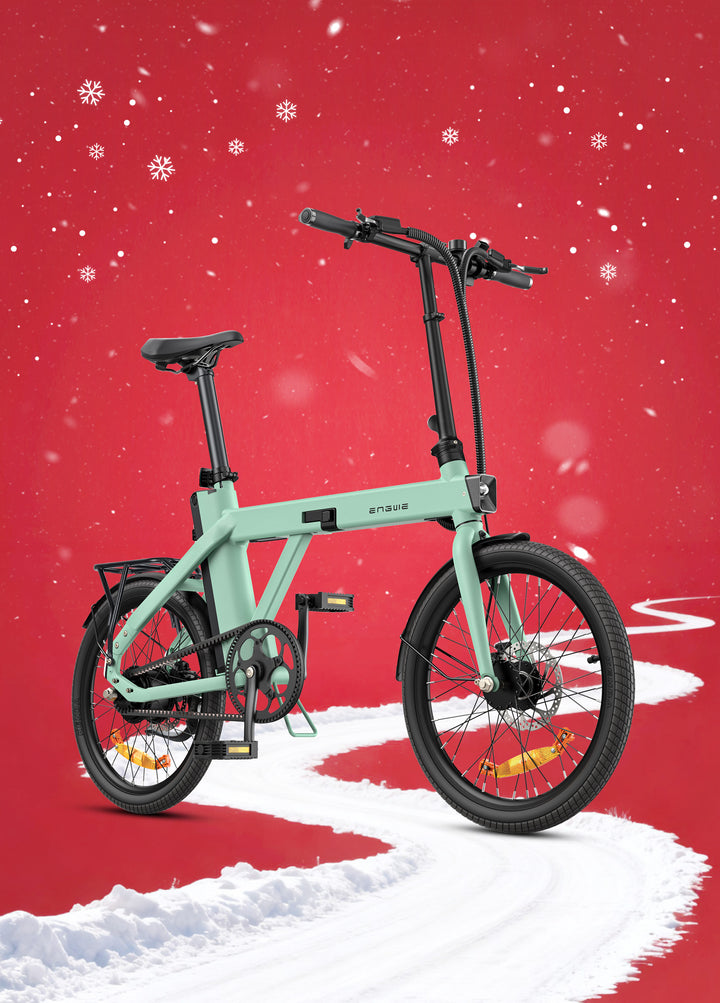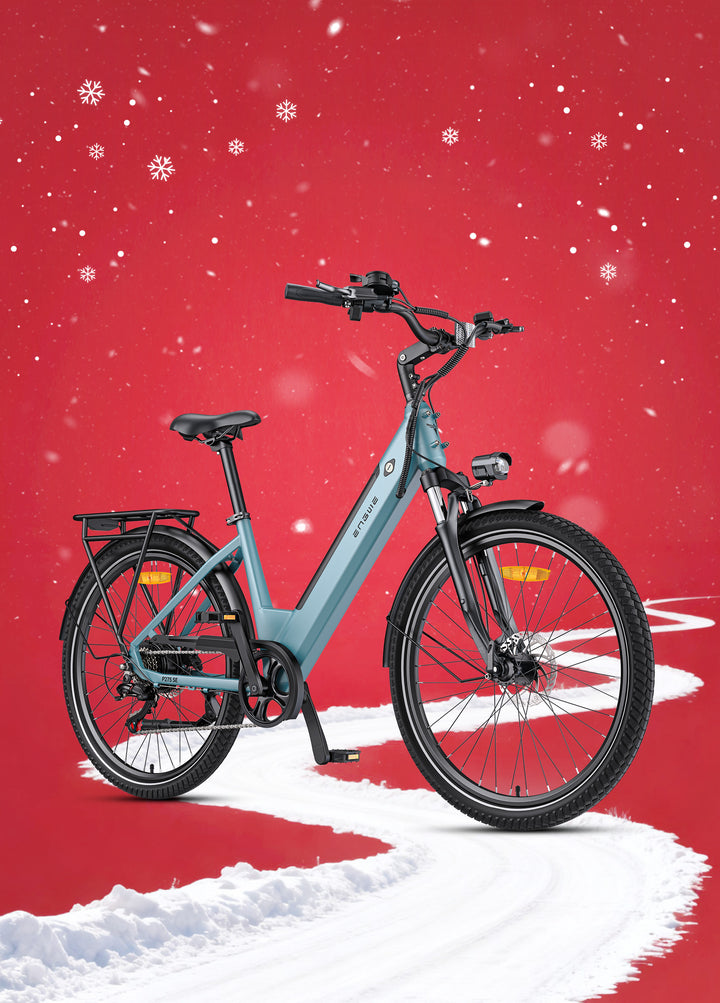In today's world, where environmental awareness is a priority, individuals are seeking cleaner and more efficient transportation options. As a result, e-bikes are considered an ideal solution to urban transportation challenges, as they offer eco-friendly, convenient, and health benefits.
In general, e-bikes are cost-effective, efficient, and sustainable, so it's not strange to see people do everything possible to acquire and ride one. However, knowing everything about riding an electric bike is important before you purchase one.
In this guide, you will learn how to use an ebike with our step-by-step guide and tips on starting, riding, and maintaining your e-bike for a smooth and enjoyable experience.
Preparing to Ride Your E-Bike
Here are some things to consider as you prepare to ride your e-bike.
1. Charging the Battery
Before you hit the road with your e-bike, charge the battery with the following tips:
- Use compatible chargers to charge the battery.
- Choose a cool or dry environment to charge the battery. Avoid charging under direct sunlight or extreme temperatures.
- Unplug the charger when you are done to avoid overcharging. The actual charging duration will depend on certain factors. Generally, batteries need between 90 and 120 minutes to charge to 40 or 50% and between 4 and 5 hours to charge to 100%.
2. Checking the Components
Do not just hop on your e-bike and start riding. Instead, perform a thorough inspection of its components before riding to avoid mid-ride failures.
- Inspect the battery, brakes, and tires before riding to be sure the bike is safe for use and in good working condition.
- Check the tires for any cracks or cuts. Use a gauge to ascertain the tire pressure. The expected pressure is usually written on the tire.
- You should be sure that the brakes are effective. Replace worn-out brake pads if you notice anything out of the ordinary.
- Confirm if the battery is installed correctly. Also, make sure no debris or moisture is on the battery terminals.
3. Adjusting the Bike
To optimize comfort on your e-bike, ensure the seat height allows a slight knee bend at the pedal's lowest point. In addition, adjust handlebars for a straight back and relaxed shoulders, and fine-tune suspension settings based on terrain and weight for a smoother ride.
Starting Your E-Bike
Once you're securely seated and have ensured all safety checks are complete, it's time to power up your e-bike and begin your ride.
1. Powering On
To power on an e-bike and activate assist mode, here is what you should do:
- Locate the ON button. Look for it on the control unit or display. Typically, you will locate it either on the battery or the handlebars.
- Power the e-bike. Press the ON button and hold it down until you notice the light on the display or indicator.
- Locate the assist controls. Find the controls that will enable you to adjust the pedal assist functionality. They are usually written as plus (+) or minus (-).
- Use the plus button to increase the pedal assist functionality.
2. Choosing the Right Assist Level
An e-bike's assist level defines the motor assistance available as you pedal. Different assist levels are suitable for various situations like hills and flat terrains. Let's look at the different assist levels below.
- Low assist – Here, you have to pedal more to extend the e-bike's range for every charge and conserve battery life. Your maximum speed might be 10 mph.
- Light assist – This assist level can help you with a decent speed in urban environments. You may need to stay within a maximum speed of 10 mph.
- Noticeable assist – This assist is ideal for slight inclines like climbing hills, causing you to reach speeds of about 15 mph.
- Obvious assist – In this scenario, the motor does more work than you do, reaching a speed of 20 mph.
- Highest assist – This is the highest motor assistance you can get from your e-bike.

3. Testing the Throttle (if available)
The throttle can be used to initiate the e-bike or to give yourself a break from pedaling. The throttle can also be used as a form of assistance during pedaling.
Throttles are also excellent for riding up hills. In such instances, no need to pedal the e-bike yourself.
That said, you should understand that using your throttle drains the battery faster than pedal-assist mode.
Riding Your E-Bike
To ride your e-bike efficiently, follow the tips below.
1. Using Pedal Assist
A consistent riding rhythm of about 60 to 90 revolutions every 60 seconds promotes efficiency and prevents fatigue.
Ensuring consistency in pedaling not only aids the motor assistance but also ensures a smooth riding experience.
2. Navigating Hills and Slopes
To climb steep terrains efficiently, use the e-bike's maximum assist level. Pedal the e-bike consistently, change to a lower gear, and try to be as relaxed and balanced as possible.
3. Braking Safely
Gently apply the back and front brakes. Slowly increase the pressure on the brakes. Move your weight in the opposite direction (to the back). Apply more force to the brakes to bring the e-bike to a complete stop.
4. Riding in Traffic
When riding an e-bike in traffic, adjusting riding speed to suit safe riding conditions is essential. Don't ride high speed in crowded areas, as this will afford you sufficient time to react to pedestrians and sudden obstacles.
Adhere to local speed limits. Most countries in Europe stipulate 25 kmph as the maximum speed for e-bikes. This will depend on whether you are using the pedal assist.

Maintenance and Care for Your E-Bike
How can you prolong your e-bike lifespan with regular maintenance? Read below!
1. Battery Care
Certain best practices can help prolong your e-bike's battery longevity and performance. For instance, monitor the charging process and ensure you unplug the charger when you are done.
Leaving the battery always connected to the charger could lead to overcharging. Also, avoid discharging the batter to 0%. This can reduce the battery performance over a while.
2. Cleaning Your E-Bike
Maintaining your e-bike by cleaning it is essential to understanding how to use e bike. Follow the steps below to clean your e-bike without damaging electrical components:
- Ensure the e-bike is powered off before proceeding with any action.
- If possible, get the battery detached before cleaning.
- Bike-specific cleaners are better off for removing dirt from plastic parts since they would not cause damage.
- Do not spray water directly on bearings or electrical components. Rinse gently.
- Use a clean and dry rag to dry your e-bike.
- Clean the chain with a moist cloth.
- Use connection cleaners to clean electrical components.
3. Regular Maintenance
Check tires, brakes, and chain regularly for wear and tear. This will assist you in identifying and resolving potential issues.
Getting stranded with a malfunctioning e-bike in a remote area is something you'd want to avoid.
Tips for Maximizing Your E-Bike Experience
After fully understanding how to use electric bicycle, you are ready to start riding your own electric cycle. However, to fully enjoy and get the most out of your e-bike adventures, consider the following tips designed to enhance your riding experience.
1. Plan Your Routes
Plan your e-biking routes from the onset. Use e-bike-friendly trails and paths to make the most of your ride. Do not wait until you are riding to choose where your trails are.
2. Carry Essential Accessories
Make sure you have all your e-bike accessories ready before commencing any ride. Prepare a checklist and ensure all accessories are available.
Accessories such as helmet, lights, multi-tools, and spare tubes are necessary to ensure a safe ride.
3. Start Slow
Ramping your electric bike to the highest speed setting is a temptation all new e-bikers go through. However, it is best to start slow.
Begin with the lowest speed setting for your first few rides and see how it goes. Use the low speed to build confidence and skill.
Recommended E-Bike Models for Beginners
Selecting the right e-bike as a newbie can be overwhelming. Therefore, for beginners exploring e-bikes, consider the versatile ENGWE Engine Pro 2.0, known for its incredible performance. Another notable feature of this bike is its foldable frame, which can be easily folded or unfolded, making it very convenient to carry and save space.

ENGWE M1 is also an ideal choice. It is EN15194 certified, has a spacious seat, dual suspension and dual battery options, providing a comfortable and worry-free riding experience.

On the other hand, the ENGWE L20 Boost provides enhanced power for multi-terrain challenges and is equipped with a front basket for riders to carry some lighter items.

All these e-bikes are easy to use and ideal for beginner riders.
Final Thoughts
E-bikes are an upgrade from normal bikes, promising better riding experience and other advantages. This guide has extensively covered how to use an ebike, from starting e-bikes to regularly maintaining them, to help you better use and maintain your bike and get more fun out of it.
Go to ENGWE E-bike Shop to choose a bike that suits you and start your ride!
It is possible that you also want to know:
Difference Between Belt Drive Vs Chain E-Bike: Pick the Right One for Riding
A Comprehensive Guide On How To Make An E Bike Faster Using Different Methods
A Comprehensive Guide About What Is A Pedelec: Its Benefits & Features For Riding






